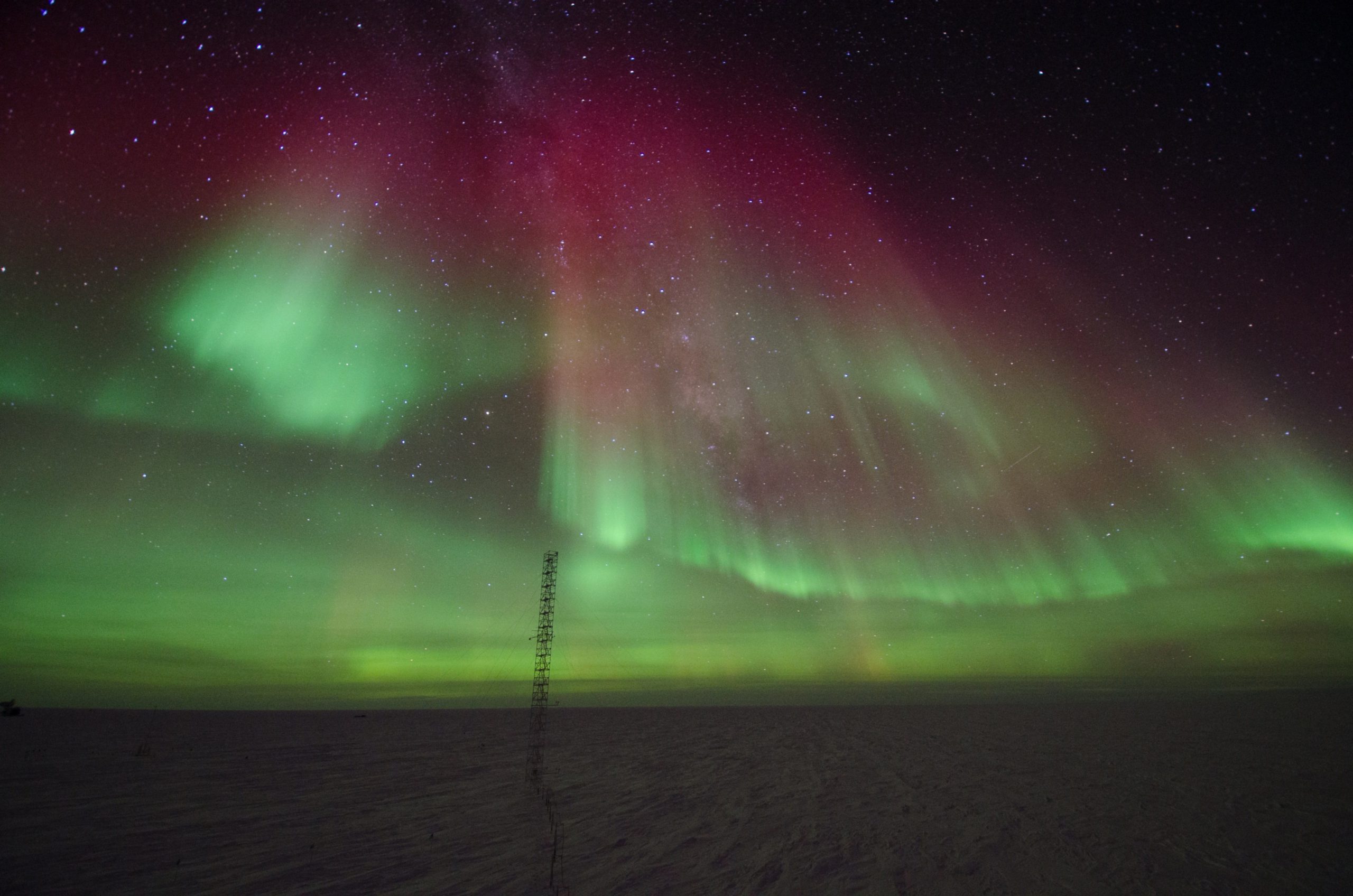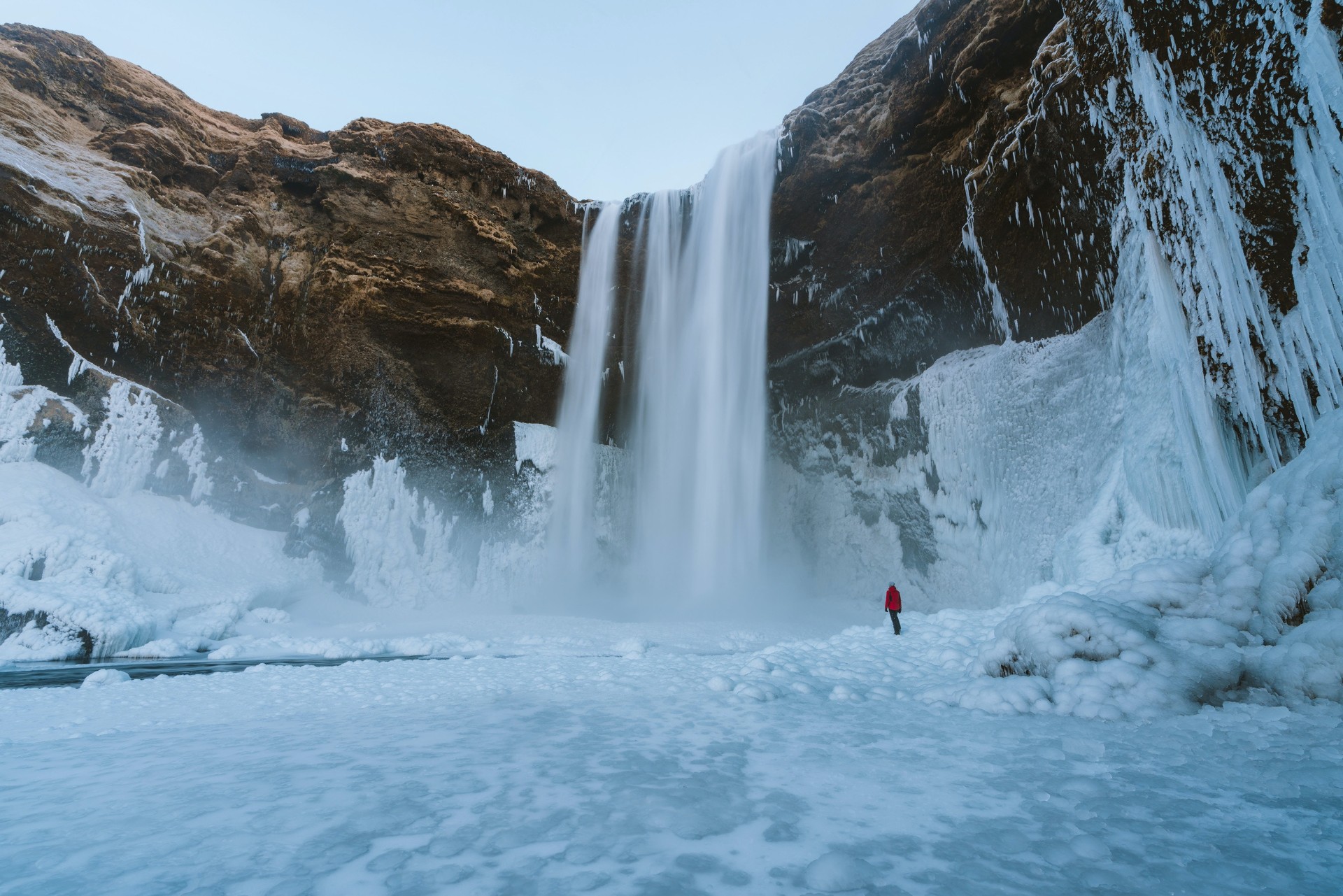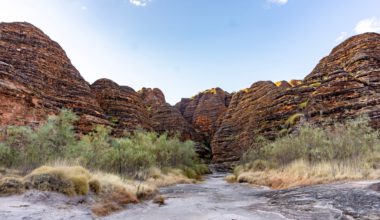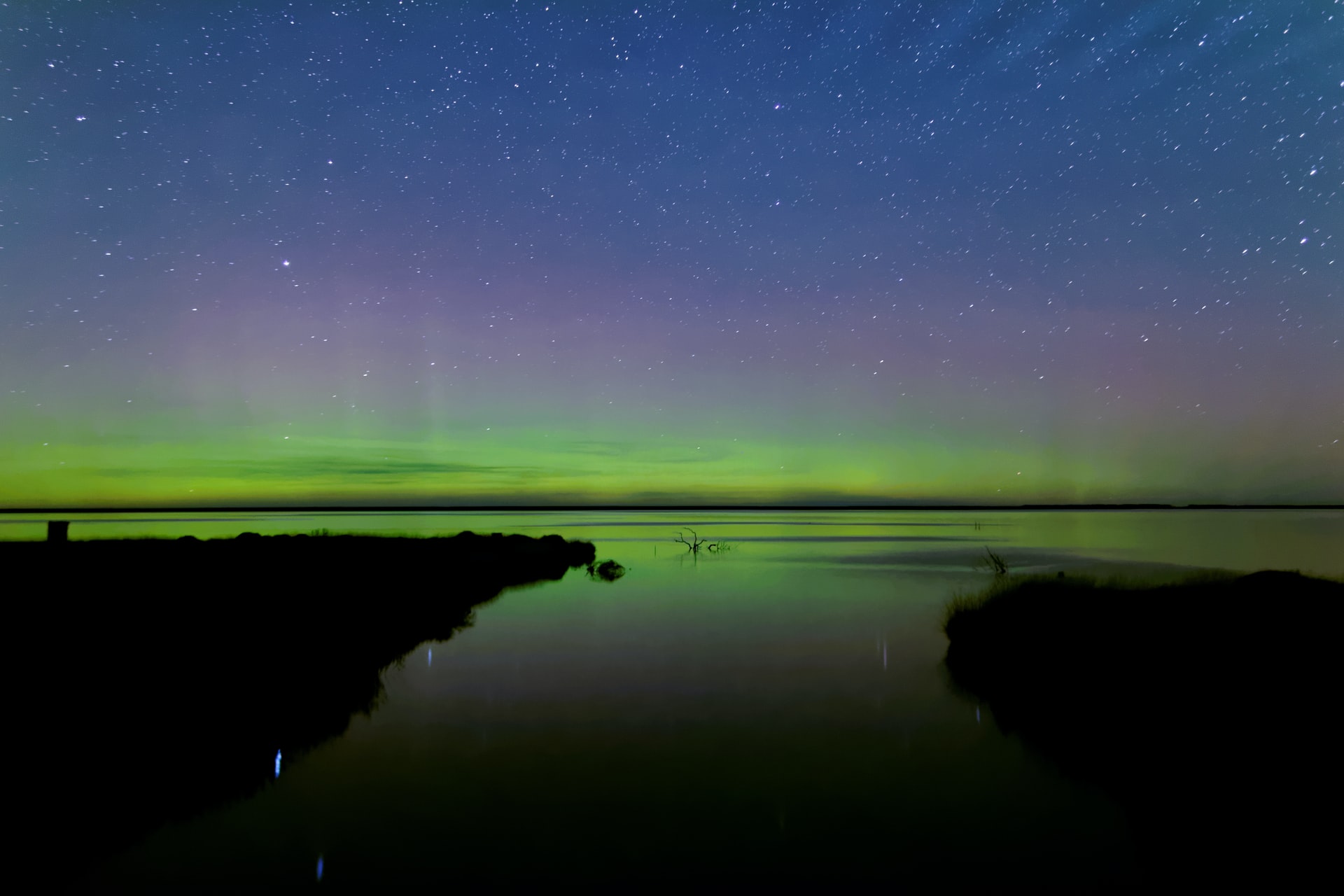
Just under a couple of months ago, the night skies over parts of New Zealand and Australia were lit up by the amazing colors of the aurora australis, better known as the southern lights. From Queenstown to Tasmania, viewers were treated to this rare phenomenon and took to social media to share their snaps. For many people outside of the Oceania region, this may come as a surprise, as auroras are more commonly talked about and photographed in the far north of the world map, spotted over countries like Canada, Norway, and Iceland.
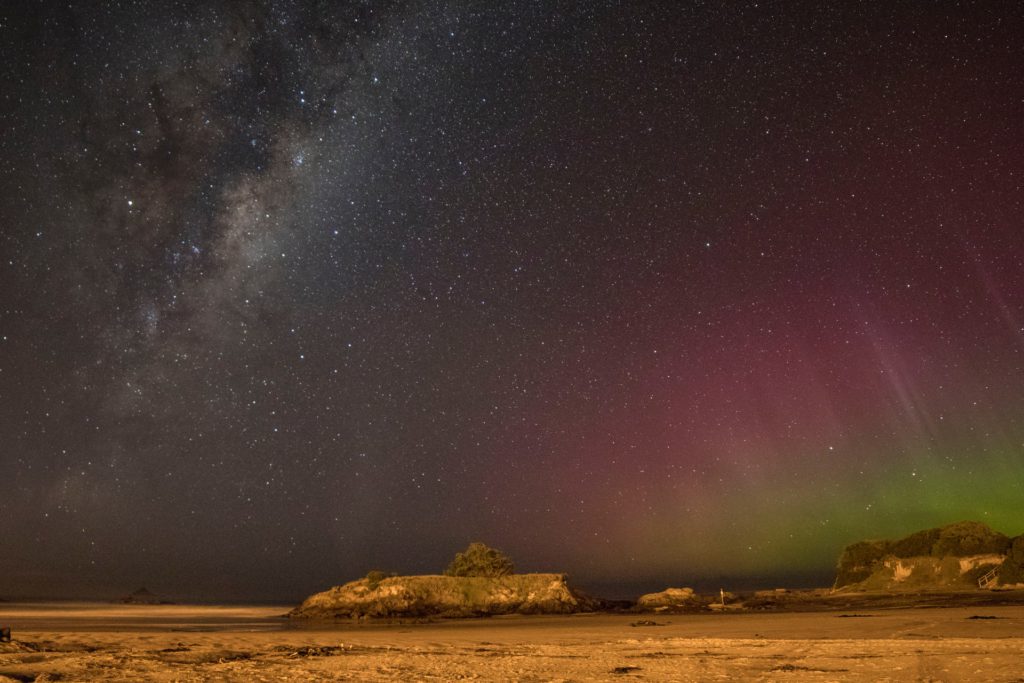
While the aurora borealis may get a lot of attention, we want to share the mystical delights of its lesser–known counterpart in the south. Only visible in the southern hemisphere, the best places to catch a glimpse of the southern lights are in New Zealand and Australia. When, then, should you be jetting off to the lands down under to go on a hunt for auroras? You’ll be glad to know that southern lights can be seen throughout the year. The spectacle takes place at random, when solar particles and atmospheric gases collide to emit the ghostly glow. That said, during these high bouts of sunspot activity, there are times where sky conditions are best to keep a lookout for that lovely glow.
Read on to find out more about the best places to see the southern lights, and the right conditions to look out for if you want to try your luck at viewing the aurora australis!
Spotting Aurora Australis: When to catch the southern lights in action
Tip #1: The winter months provide perfect conditions
Unlike the northern lights, the southern lights aren’t quite as severely affected by seasonal light changes, meaning they can be visible throughout the year. The trick is, dark skies and a clear atmosphere can greatly increase the beauty and visibility of the glow, and as such, the winter months — May to August — are great times to see the aurora australis in all its glory, right until the spring equinox in September.
Tip #2: Be at your designated viewing spot by midnight
The best time to see the southern lights at its brightest is when the night sky is as dark as it can get. Midnight is the optimal time, as the sun is on the other side of the planet. Be sure to give yourself plenty of time to get to your viewpoint before midnight arrives to make the most of the hour!
Tip #3: Take note of the phases of the moon and plan accordingly
The moon can be incredibly bright and could put a damper on the aurora viewing experience. Plan your excursions for nights that fall between the waning crescent and the waxing crescent, and definitely try to avoid a viewing when the moon is full!
Tip #4: The weather forecast is your best friend
Like any outdoor activity, checking the weather forecast for the night can greatly help you to avoid disappointment. It might be necessary to wait several days or even weeks to find the best conditions and clearest skies. To make things easier, check the Aurora Service website for accurate readings of aurora australis activity levels and hourly forecasts.
Best places to see the southern lights in New Zealand
Stewart Island
Stewart Island has been given the internationally–recognized status of a Dark Sky Sanctuary, meaning the quality of the night sky over this remote part of the world is exceptional. Easily accessible, the island has the perfect nocturnal conditions to make it a true paradise for stargazers and aurora chasers alike.
How to get to Stewart Island by ferry: Ferries depart from the South Island seaport town of Bluff and take approximately 60 minutes to reach Stewart Island. Check the Stewart Island Experience Ferry timetable for more information.
How to get to Stewart Island by plane: Flights depart from Invercargill Airport and take approximately 20 minutes to reach Oban, Stewart Island. Flight times depend on the season — check the Stewart Island Flights timetable for more information.
Invercargill
Unable to get to Stewart Island? Invercargill is located close by, on the southern tip of South Island. You might be lucky enough to spot the aurora australis here, but you will need to get away from the city lights in order to catch a glimpse of the phenomenon!
How to get to Invercargill by plane: You can fly directly into Invercargill Airport from Wellington and Christchurch, or catch a connecting flight from Auckland.
How to get to Invercargill by coach: The InterCity bus service departs daily for Invercargill from various locations around the South Island, including from Christchurch, Dunedin, and Te Anau.
Otago Peninsula
While rare, the southern lights have been known to grace the night skies over Dunedin. That said, if you’re going to be in Dunedin, you might as well try your luck over at the adjoining Otago Peninsula. There, you’ll find Hoopers Inlet, two kilometers south of Portobello, known for its great natural beauty and also its reputation as one of the best spots to view the aurora lights.
How to get to Otago Peninsula: The Otago Peninsula is located approximately 15 kilometers from the city of Dunedin and is easily accessible by road. The city’s local bus service covers the Otago Peninsula, with bus 18 making a stop at Portobello. Refer to the Dunedin bus timetable for more information.
Lake Tekapo
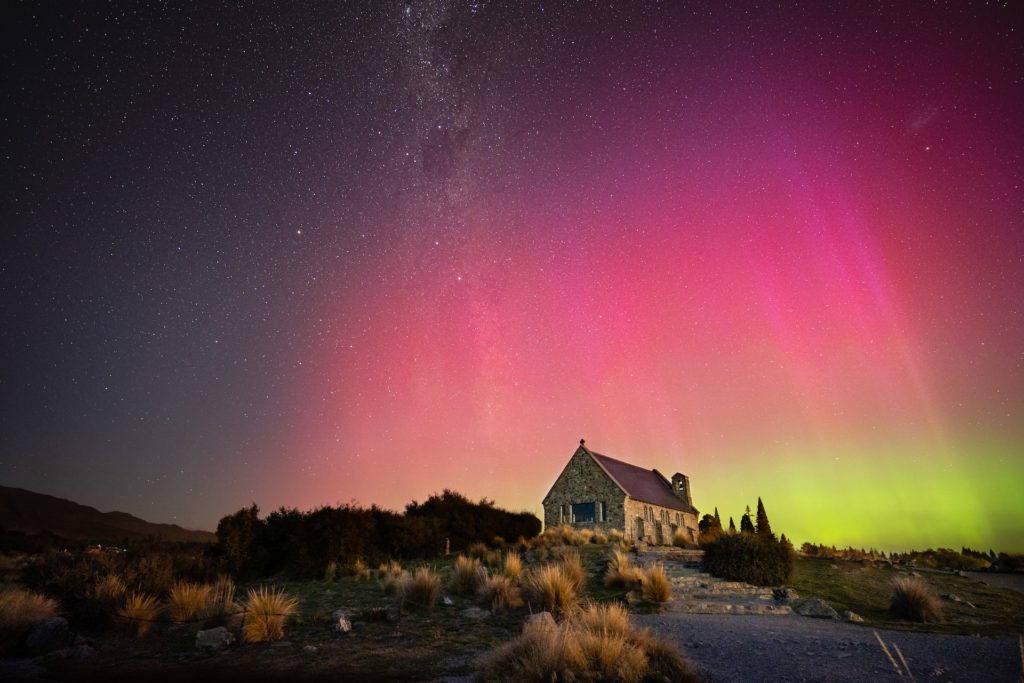
Located in the middle of South Island, Lake Tekapo is famous for its clear skies and starry nights. On top of being one of the best places to stargaze, it is also a good spot to look out for the southern lights. Lake Tekapo is surrounded by mountains, so you can set up camp on higher ground to get a better view of the lights!
How to get to Lake Tekapo by coach: The InterCity bus service provides daily trips to Tekapo from Christchurch and Queenstown. The journey from Christchurch takes approximately 3 hours and 45 minutes. The journey from Queenstown takes approximately 4 hours and 15 minutes.
Queenstown
Highly accessible, Queenstown and its lovely night skies have, on occasion, dazzled its residents with views of the southern lights. With wide, open areas surrounding the town itself, it’s easy to find a place away from the city lights to set up camp for the night.
How to get to Queenstown: You can catch direct flights into Queenstown Airport from Auckland, Christchurch, and Wellington, as well as Sydney, Brisbane, Melbourne, and the Gold Coast in Australia.
Best places to see the southern lights in Australia
Mount Wellington, Tasmania
Aurora hotspots in Australia are mostly found in Tasmania, thanks to the island state’s southern–most location and its clear skies that are free from major light pollution. Unsurprisingly, Mount Wellington, located close to Hobart on the southeast coastal region, has been known to provide an unobstructed view of the southern lights on a clear night.
How to get to Mount Wellington: Mount Wellington is not far from Hobart, Tasmania’s capital city. The drive from Hobart to the top of Mount Wellington is approximately 21 kilometers and takes about 30 minutes.
South Arm Peninsula, Tasmania
Also close to Hobart, the South Arm Peninsula provides a good stretch of flat terrain to get a perfect view of the horizon. If you’re staying for the southern lights, you might as well stay for the beautiful beaches and the relaxing atmosphere.
How to get to South Arm Peninsula: The South Arm Peninsula is easily accessible from Hobart. Various routes along the South Arm Peninsula are covered by the local bus service, with bus 646 departing daily from Hobart City Interchange. Refer to the Metro Tasmania timetable for more information.
Cradle Mountain–Lake St. Clair National Park, Tasmania
Considered one of the most beautiful national parks in Australia with its lovely lakes and gorgeous alpine forests, Cradle Mountain–Lake St. Clair National Park makes a great backdrop for an aurora viewing. The park is located in the middle of Tasmania and can be easily accessed from Hobart and Launceston.
How to get to Cradle Mountain–Lake St. Clair National Park: Located in the middle of the island, Cradle Mountain–Lake St. Clair National Park is easily accessible from Tasmania’s two major towns, Hobart and Launceston. If driving by car, the northern entrance of the park is 90 minutes from Launceston, and the southern entrance is 2 hours and 30 minutes from Hobart.
Of course, the night sky hides so much more than just the southern lights and northern lights. For anyone just getting started with astronomy, there’s a world of fascinating planets, stars, galaxies, constellations, and celestial phenomena out there, just out of reach of the naked eye. Check out this beginner’s guide on the top things to see in the night sky with a telescope if you’d love to discover something new!
About TourHero
TourHero is a social travel platform that enables you to travel with like-minded people and fall in love with the journey. We work closely with handpicked local operators to ensure every experience curated is unique and exclusive to your travel group. Come with us on epic adventures and create memories that last a lifetime!
